 March 1, 2018 John E. Ross, KD8IDJ, Editor
| ||||||
ARRL Requests Expanded HF Privileges for Technician Licensees ARRL has asked the FCC to expand HF privileges for Technician licensees to include limited phone privileges on 75, 40, and 15 meters, plus RTTY and digital mode privileges on 80, 40, 15, and 10 meters. The FCC has not yet invited public comment on the proposals, which stem from recommendations put forth by the ARRL Board of Directors' Entry-Level License Committee, which explored various initiatives and gauged member opinions in 2016 and 2017.
Specifically, ARRL proposes to provide Technician licensees, present and future, with phone privileges at 3.900 to 4.000 MHz, 7.225 to 7.300 MHz, and 21.350 to 21.450 MHz, plus RTTY and digital privileges in current Technician allocations on 80, 40, 15, and 10 meters. The ARRL petition points out the explosion in popularity of various digital modes over the past 2 decades. Under the ARRL plan, the maximum HF power level for Technician operators would remain at 200 W PEP. The few remaining Novice licensees would gain no new privileges under the League's proposal. ARRL said its proposal is critical to developing improved operating skills, increasing emergency communication participation, improving technical self-training, and boosting overall growth in the Amateur Service, which has remained nearly inert at about 1% per year. ARRL's petition points to the need for compelling incentives not only to become a radio amateur in the first place, but then to upgrade and further develop skills. Demographic and technological changes call for a "periodic rebalancing" between those two objectives, the League maintains. "There has not been such a rebalancing in many years," ARRL said in its petition. "It is time to do that now." The FCC has not assessed entry-level operating privileges since 2005. The Entry-Level License Committee offered very specific data- and survey-supported findings about growth in Amateur Radio and its place in the advanced technological demographic that includes individuals younger than 30. It received significant input from ARRL members via more than 8,000 survey responses. "The Committee's analysis noted that today, Amateur Radio exists among many more modes of communication than it did half a century ago, or even 20 years ago," ARRL said in its petition.
Now numbering some 378,000, Technician licensees comprise more than one-half of the US Amateur Radio population. ARRL said that after 17 years' experience with the current Technician license as the gateway to Amateur Radio, it's urgent to make it more attractive to newcomers, in part to improve upon science, technology, engineering, and mathematics (STEM) education "that inescapably accompanies a healthy, growing Amateur Radio Service," ARRL asserted. ARRL said its proposal is critical to developing improved operating skills, increasing emergency communication participation, improving technical self-training, and boosting overall growth in the Amateur Service, which has remained nearly inert at about 1% per year. The Entry-Level License Committee determined that the current Technician class question pool already covers far more material than necessary for an entry-level exam to validate expanded privileges. ARRL told the FCC that it would continue to refine examination preparation and training materials aimed at STEM topics, increase outreach and recruitment, work with Amateur Radio clubs, and encourage educational institutions to utilize Amateur Radio in STEM and other experiential learning programs. "ARRL requests that the Commission become a partner in this effort to promote Amateur Radio as a public benefit by making the very nominal changes proposed herein in the Technician Class license operating privileges," the petition concluded. NTIA Targets Portion of 3.4 GHz Band for Potential Wireless Broadband Use The National Telecommunications and Information Administration (NTIA) has identified 3450 to 3550 MHz for potential wireless broadband use. Amateur Radio has a secondary allocation of 3300 to 3500 MHz, sharing the spectrum with government radars; the popular "weak-signal" frequency is 3456.1 MHz. The NTIA oversees the use of spectrum by federal government agencies. "America is the world's leader in Wi-Fi and 4G LTE, and we have claimed an early lead in bringing 5G to reality," NTIA Administrator David J. Redl said in making the announcement. "It's essential to American competitiveness that we maintain our leadership in all of these areas."
Redl said that the NTIA, in coordination with the Department of Defense and other federal agencies, has identified 100 megahertz of spectrum "for potential repurposing to spur commercial wireless innovation." He said the 3450 - 3550 MHz band "could be a key asset in our nation's broadband spectrum inventory." In the US, military radar systems operate in the 3450 - 3550 MHz band, and Amateur Radio compatibly shares the lower half of that band with the military on a secondary basis. Redl said the Defense Department plans to submit a proposal under the Spectrum Pipeline Act to carry out a comprehensive RF engineering study "to determine the potential for introducing advanced wireless services in this band without harming critical government operations." ARRL intends to contribute to NTIA's study. The FCC, in coordination with NTIA and the Defense Department, has already approved rules for its planned Citizens Broadband Radio Service (CBRS) in the adjacent 3550 - 3700 MHz band. In 2014, UK telecommunications regulator Ofcom announced that it was ending Amateur Radio access to significant portions of the 2.3 and 3.4 GHz bands following a year-long consultation -- a rulemaking proceeding -- that involved the release by the Ministry of Defence of 150 MHz of spectrum at 3.4 GHz to prepare for the roll out of future 5G services. Amateur Radio in the UK was secondary on both bands. Ofcom said it expected the spectrum to go on auction later this month. The Doctor Will See You Now! "Adding an Amplifier to your Station" is the topic of the latest (March 1) episode of the "ARRL The Doctor is In" podcast. Listen...and learn! More than a half-million downloads since its debut in April 2016 attest to the podcast's popularity.
Every 2 weeks, your host, QST Editor-in-Chief Steve Ford, WB8IMY, and the Doctor himself, Joel Hallas, W1ZR, will discuss a broad range of technical topics. You can also e-mail your questions to doctor@arrl.org, and the Doctor may answer them in a future podcast. Enjoy "ARRL The Doctor is In" on Apple iTunes, or by using your iPhone or iPad podcast app (just search for "ARRL The Doctor is In"). You can also listen online at Blubrry, or at Stitcher (free registration required, or browse the site as a guest) and through the free Stitcher app for iOS, Kindle, or Android devices. If you've never listened to a podcast before, download our beginner's guide. On-the-Air Test of New FT8 "DXpedition Mode" Set for Early March A second beta version of WSJT-X version 1.9.0 has been released, the WSJT development group announced this week. The "release candidate," as it's called, is designated as version 1.9.0-rc2. An initial beta release has already been field-tested by a small group of users. The WSJT development group said a primary purpose of the second beta release is to allow further field testing of the new FT8 "DXpedition Mode," designed to enable DXpeditions to make FT8 contacts at very high rates, and it is inviting the Amateur Radio community to participate in a public test run of FT8 DXpedition Mode on the evening of March 6 (North American time).
Test times and frequencies are March 6, 2300 UTC on 14.080 MHz; March 7, 0000 UTC on 10.141 MHz; March 7, 0100 UTC on 7.080 MHz, and March 7, 0200 UTC on 3.585 MHz. Frequencies are not the conventional FT8 operating frequencies and are subject to change, subject to conditions. Last-minute changes will be posted. According to the FT8 DXpedition Mode User Guide, contacts between the DXpedition station and callers can be completed in as little as one transmission apiece by the calling station. Authorized DXpedition stations can transmit up to five signals simultaneously, allowing contact rates up to about 500 per hour under ideal conditions. Operation will use split mode, which is already commonplace for DXpeditions. The DXpedition station (Fox) will transmit at audio frequencies between 300 and 900 Hz; multiple simultaneous signals will be spaced at 60 Hz intervals. Calling stations (Hounds) make initial calls anywhere in the 1000 - 4000 Hz range. Exchanges would go something like this: Fox Hounds 1. CQ KH1/KH7Z 2. KH1/KH7Z K1ABC, KH1/KH7Z W9XYZ... 3. K1ABC KH7Z -13 4. KH7Z K1ABC R-11 5. K1ABC RR73; W9XYZ -17 6. KH7Z W9XYZ R-16 7. W9XYZ RR73; G4AAA -0...
Installation packages for Windows, Linux, macOS, and Raspbian Jessie have been posted on the WSJT website. Developer Joe Taylor, K1JT, has told ARRL that the goal is to have the official release of WSJT-X version 1.9.0, finished, documented, and thoroughly tested well in advance of the planned KH1/KH7Z DXpedition to Baker Island in June. General availability of the official WSJT-X version 1.9.0 will be announced "in the near future," the development group said. Read more. Hamvention Online Flea Market and Inside Exhibit Reservations Open Online reservations for Hamvention® 2018 flea market and inside exhibit spaces are now available. Vendors who had spaces last year are being encouraged to log into their accounts to reserve them for this year's event. Online sales were delayed after it became apparent that an additional building would not be built before Hamvention, prompting scheduling and planning adjustments. The addition of Building 4 -- the former furniture store, which was not available last year, has made room for more indoor exhibits, however. Hamvention organizers said this week that both the flea market and inside exhibits committees have been responding to vendors as promptly as possible. Hamvention General Chairman Ron Cramer, KD8ENJ, asked vendors to be patient, once they have entered their information for 2018.
Inside exhibits Chairman Brian Markland, N8UDQ, said that any exhibitor who completes an online order for the same spaces by April 15 will be guaranteed those spaces. Vendors who were in tents during Hamvention 2017 will have the option of keeping tent space or entering the pool for the additional spots in Building 4. "Since we expect more people to want to move to the building than there are spaces, we determined that a lottery was the only fair way to assign those spaces," Markland said. Vendors staying in tents during 2018 will be moved inside in 2019, when the new building is available, he added.
Both Cramer and Markland urged vendors to read the 2018 inside exhibits and flea market rules and instructions before registering. Incomplete or incorrect applications only slow the process. Contact the flea market, exhibits or tickets committee, as appropriate. Sending e-mails elsewhere will only cause delays, Hamvention said. This will mark Hamvention's second year at its new location, the Greene County Fairgrounds and Expo Center in Xenia, Ohio. 3Y0I Bouvet DXpedition Invites 3Y0Z Team to Join Forces This week, the 3Y0I Bouvet Island DXpedition team publicly invited the members of the ill-fated 3Y0Z team to join forces as part of "rebooted preparations" for the venture, but 3Y0Z team co-leader Bob Allphin, K4UEE, told ARRL that his group has other plans. Dates for the 3Y0I DXpedition, meanwhile, remain up in the air at this point, but the team said it would announce its expected dates of operation soon. "Our preparations...are taking place in extraordinary times and under unusual conditions," the 3Y0I team said on its website over the weekend, noting that it had suspended its initial plans to activate Bouvet Island late last year at the request of the 3Y0Z DXpedition, which subsequently was forced to abort its landing and head home.
The 3Y0I DXpedition team also announced that it has contracted for a larger transportation vessel that would permit more passengers. "The vessel's crew is experienced in troop landing at Bouvet and other subantarctic islands," The 3Y0I announcement said. "Our cruise plan doesn't change; we'll depart from and sail back to Cape Town..." "The landing procedure will be supervised by landing troops and will utilize special boats that will allow the team to transport our gear, and to land at the island safely," the announcement asserted. The 3Y0Z DXpedition team had planned to transport personnel and equipment between its vessel, Betanzos, and the island via helicopter. High winds and rough seas, as well as problems with one engine, prompted the Betanzos' captain to abort any attempted landings in the interest of safety and head back. Bouvet Island, a dependency of Norway, is currently the second most-wanted DXCC entity. -- Thanks to OPDX and The Daily DX for some information Ducie Island 2018 DXpedition Plans Coming Together for this Fall The Perseverance DX Group (PDXG) reports that its plans to activate the protected marine area of Ducie Island from October 20 to November 3, 2018 are starting to jell. The last Ducie Island DXpedition was VP6DX in 2008. Ducie is currently the 21st most-wanted DXCC entity, according to Club Log. The 2018 DXpedition would operate as VP6D. A team of 15 operators will be on the island for up to 14 days, departing from Mangareva, French Polynesia, aboard the expedition ship Braveheart. Seven operating positions are planned for 160 through 10 meters, SSB, CW, and digital, including FT8. VP6D has added 6-meter Earth-Moon-Earth to the mix and hopes to make the first-ever 6-meter moonbounce contacts from Ducie Island.
The team reported that the antennas planned include 2-element vertical dipole arrays on the high bands backed up by a couple of horizontal beams; 4-squares on 30 and 40 meters, and verticals on 80 and 160. Top Band receive antennas are still under development. A grant from the Northern California DX Foundation (NCDXF) as well as contributions from other DX organizations, are helping to fund the adventure. It's believed that this would be the fourth DXpedition to Ducie Island. An uninhabited atoll, Ducie Island is a British Overseas Territory in the Pitcairn Islands in the South Pacific Direct questions to Team Ducie. Two Ham-Astronauts Return Safely to Earth Two ham-astronauts were among three members of the International Space Station (ISS) Expedition 54 crew returning to Earth on February 27 after about 6 months in space. Astronauts Mark Vande Hei, KG5GNP, and Joe Acaba, KE5DAR, landed in Kazakhstan in a Soyuz spacecraft, along with cosmonaut Alexander Misurkin.
Their time on station marked the beginning of the first long-term increase in crew size on the US segment, enabling NASA to double the time dedicated to science. Research highlights included investigations into the manufacturing of fiber optic filaments in microgravity and measuring the Sun's energy input to Earth. Vande Hei logged 168 days in space on his first mission and conducted four spacewalks. Acaba completed one spacewalk and has now accrued 306 days in space on three missions. Both participated in Amateur Radio on the International Space Station (ARISS) school contacts and other educational events. Now operating the station are Expedition 55 Commander Anton Shkaplerov and Flight Engineers Scott Tingle, KG5NZA, and Norishige Kanai. Astronauts Ricky Arnold, KE5DAU, and Drew Feustel and cosmonaut Oleg Artemyev head to the ISS on March 21. IARU Region 3 Disaster Communications Committee Chair Jim Linton, VK3PC, SK The chair of the International Amateur Radio Union (IARU) Region 3 Disaster Communications Committee, Jim Linton, VK3PC, of Forest Hill, Victoria, Australia, died on February 22 of thyroid cancer.
A veteran radio enthusiast, Linton joined the WIA as a teenager and shortwave listener. IARU Secretary David Sumner, K1ZZ, called Linton "a tireless worker for the common good." In Brief...
The K7RA Solar Update Tad Cook, K7RA, Seattle, reports: Earth is exiting a solar wind stream that produced brief G1-class geomagnetic storms. We've seen many days with no sunspots over the past year, especially recently. Periods of more than 3 days of a blank sun occurred in 8 months of 2017 plus December 28, 2017, through January 3, 2018; January 20-29, and February 18-25. Sunspots have been visible every day since February 26. For the February 22-28 reporting week, the average daily sunspot number was 6, up slightly from 5.6 over the previous 7 days. Average daily solar flux declined from 70.1 to 68.3.
NOAA's 45-day forecast for February 28 predicted a planetary A index of 5 on March 1-3; 8 on March 4; 5 on March 5-13; 10, 8, 12, 15, and 18 on March 14-18; 5 on March 19-20; 12, 15, 10, 8, 24, and 12 on March 21-26; 5 on March 27-April 9, and 10, 8, 12, 15, and 18 on April 10-14. Predicted solar flux from the same 45-day forecast is 69, 68, 70, and 71 on March 1-4; 72 on March 5-8; 78 on March 9-12; 75, 72, and 70 on March 13-15; 68 on March 16-26; 70 and 75 on March 27-28; 78 on March 29-April 8; 75, 72, and 70 on April 9-11, and 68 on April 12-14. Sunspot numbers for February 22-28, 2018 were 0, 0, 0, 0, 16, 15, and 11, with a mean of 6. The 10.7-centimeter flux was 68.4, 67.6, 68.2, 67.2, 69.8, 67.9, and 68.8, with a mean of 68.3. Estimated planetary A indices were 11, 16, 9, 4, 7, 19, and 7, with a mean of 10.4. Estimated mid-latitude A indices were 9, 11, 6, 2, 6, 14, and 4, with a mean of 7.4. Send me your reports and observations. Getting it Right In the article "'Improving Hurricane Preparedness' is National Hurricane Conference Theme," in the February 22 edition of The ARRL Letter, the time of the Amateur Radio Session is incorrect. The Amateur Radio Session will take place Tuesday, March 27, at 10:30 AM. The article "Postponed DXpedition to Disputed Spratlys Reset for March," in the February 22 edition of The ARRL Letter overlooked a two-person DXpedition from the Spratlys in 2016. James Brooks, 9V1YC, and Chris Burger, ZS6EZ, operated from Layang Layang Island for 6 days in May, making nearly 11,000 contacts. -- Thanks to Chris Berger, ZS6EZ Just Ahead in Radiosport
See the ARRL Contest Calendar for more information. For in-depth reporting on Amateur Radio contesting, subscribe to The ARRL Contest Update via your ARRL member profile e-mail preferences. Upcoming ARRL Section, State, and Division Conventions
Find conventions and hamfests in your area.
. .
Subscribe to...
Free of charge to ARRL members...
Find ARRL on Facebook! Follow us on Twitter, Snapchat @ARRLHQ, and Instagram! | ||||||
 "This action will enhance the available license operating privileges in what has become the principal entry-level license class in the Amateur Service," ARRL said in its
"This action will enhance the available license operating privileges in what has become the principal entry-level license class in the Amateur Service," ARRL said in its .jpg)
-2017.png) The NTIA announcement is "great news," according to FCC Chairman Ajit Pai. "The Commission, working together with NTIA, has already made the 3.5 GHz band available for wireless services, and we recently initiated a process to consider whether all or parts of the adjacent satellite spectrum can also be made available" Pai said. "Altogether, this could unleash a contiguous block of hundreds of megahertz of valuable spectrum for new technologies and services, including 5G."
The NTIA announcement is "great news," according to FCC Chairman Ajit Pai. "The Commission, working together with NTIA, has already made the 3.5 GHz band available for wireless services, and we recently initiated a process to consider whether all or parts of the adjacent satellite spectrum can also be made available" Pai said. "Altogether, this could unleash a contiguous block of hundreds of megahertz of valuable spectrum for new technologies and services, including 5G." Sponsored by
Sponsored by .JPG) "The goal is to simulate a rare DXpedition pileup by having many stations ('Hounds') calling and trying to work a designated pseudo-DXpedition station ('Fox')," the announcement said. All test participants must use WSJT-X version 1.9.0-rc2.
"The goal is to simulate a rare DXpedition pileup by having many stations ('Hounds') calling and trying to work a designated pseudo-DXpedition station ('Fox')," the announcement said. All test participants must use WSJT-X version 1.9.0-rc2..png) "If you have legitimate access to more than one call sign, please feel free to call and work the Fox more than once," the announcement said. "We want the test pileup to be as deep as possible."
"If you have legitimate access to more than one call sign, please feel free to call and work the Fox more than once," the announcement said. "We want the test pileup to be as deep as possible." "The staff is working to confirm requests as quickly as possible," Cramer said. "Additional e-mails or information requests will only slow the process."
"The staff is working to confirm requests as quickly as possible," Cramer said. "Additional e-mails or information requests will only slow the process."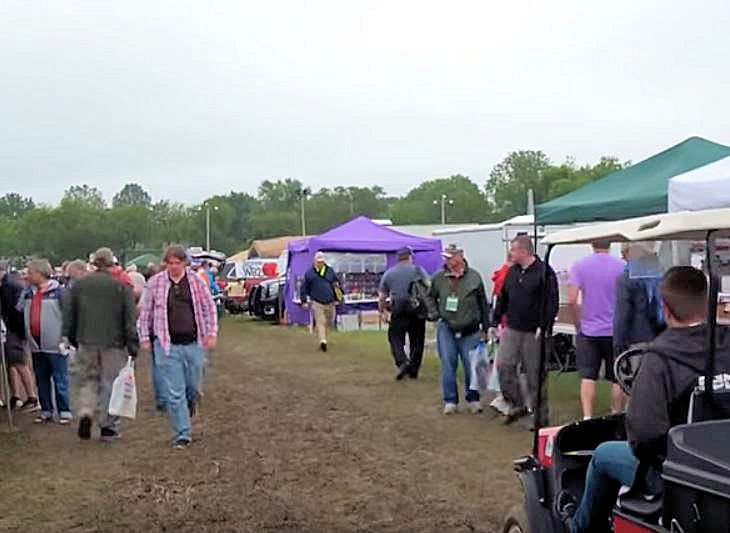 Because some vendors will be moving inside, and to address some issues that arose last year, layouts inside tents may change slightly; affected tent vendors will be contacted by the exhibits committee.
Because some vendors will be moving inside, and to address some issues that arose last year, layouts inside tents may change slightly; affected tent vendors will be contacted by the exhibits committee. The 3Y0I team is headed by Polish radio amateur Dom Grzyb, 3Z9DX, perhaps best known for his surprise, and brief,
The 3Y0I team is headed by Polish radio amateur Dom Grzyb, 3Z9DX, perhaps best known for his surprise, and brief, 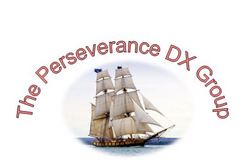 "The logistics plan is coming together," the team announced on February 8. "Our equipment will be consolidated in Fremont, California, for testing, packaging, and shipment to the Braveheart in New Zealand."
"The logistics plan is coming together," the team announced on February 8. "Our equipment will be consolidated in Fremont, California, for testing, packaging, and shipment to the Braveheart in New Zealand."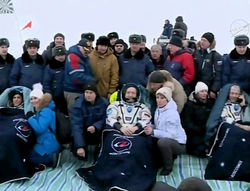
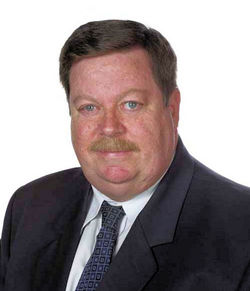 For many years, Linton was a consistent and reliable source of news and information regarding Amateur Radio disaster response activities in IARU Region 3 and was a regular contributor to
For many years, Linton was a consistent and reliable source of news and information regarding Amateur Radio disaster response activities in IARU Region 3 and was a regular contributor to 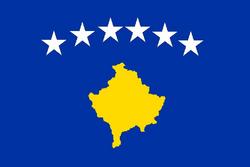 Z60A will participate in the
Z60A will participate in the .png) The patch design for the US Jamboree on the Air 2018 (
The patch design for the US Jamboree on the Air 2018 (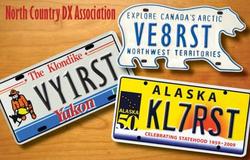 For the third year, the North Country DX Association will field RST-suffix stations for the entire month of March. The operation will include stations in Alaska, Yukon Territory, Northwest Territories, Nunavut, and Greenland. Listen for VY1RST/VY0 and VE8RST/VY0 from Ellesmere Island, as well as KL7RST, VY1RST, VE8RST, VY0RST, and OX7RST in Greenland. Exchange signal report and state/province. (NCDXA RST stations will send town or city.) QSL to K7ICE. NCDXA said the activity is aimed at further promoting Amateur Radio in northern North America. Shortwave listeners are welcome to participate.
For the third year, the North Country DX Association will field RST-suffix stations for the entire month of March. The operation will include stations in Alaska, Yukon Territory, Northwest Territories, Nunavut, and Greenland. Listen for VY1RST/VY0 and VE8RST/VY0 from Ellesmere Island, as well as KL7RST, VY1RST, VE8RST, VY0RST, and OX7RST in Greenland. Exchange signal report and state/province. (NCDXA RST stations will send town or city.) QSL to K7ICE. NCDXA said the activity is aimed at further promoting Amateur Radio in northern North America. Shortwave listeners are welcome to participate.  Average planetary A index -- a geomagnetic indicator calculated from values measured at multiple magnetometers around the world -- rose marginally from 10 to 10.4, and mid-latitude A index, measured by a single magnetometer on Wallops Island, Virginia, dipped from 7.7 to 7.4. All of these values are moderate, or quiet. The most active day was February 27, when planetary A index was 19, and the mid-latitude A index was 14.
Average planetary A index -- a geomagnetic indicator calculated from values measured at multiple magnetometers around the world -- rose marginally from 10 to 10.4, and mid-latitude A index, measured by a single magnetometer on Wallops Island, Virginia, dipped from 7.7 to 7.4. All of these values are moderate, or quiet. The most active day was February 27, when planetary A index was 19, and the mid-latitude A index was 14.







